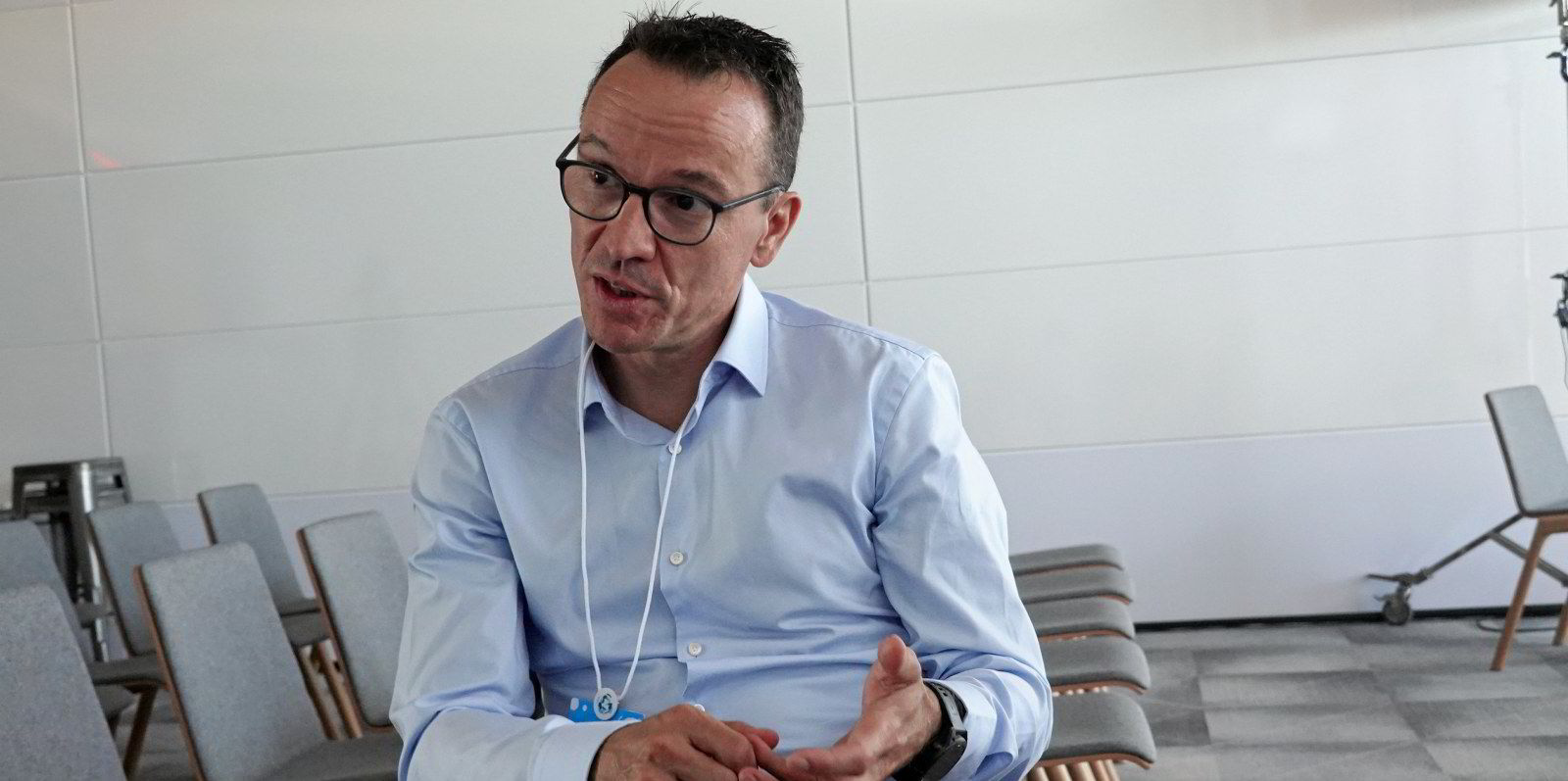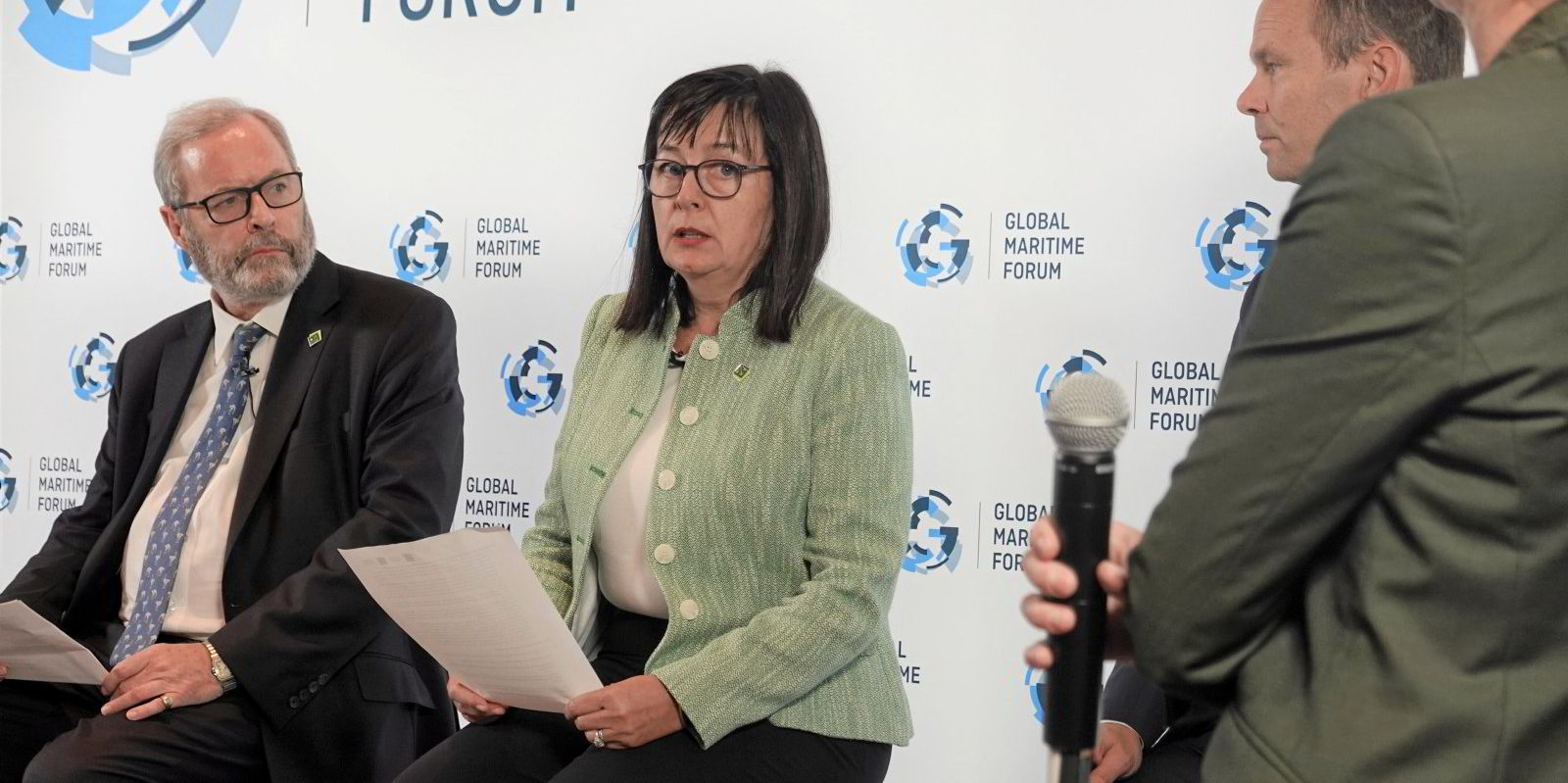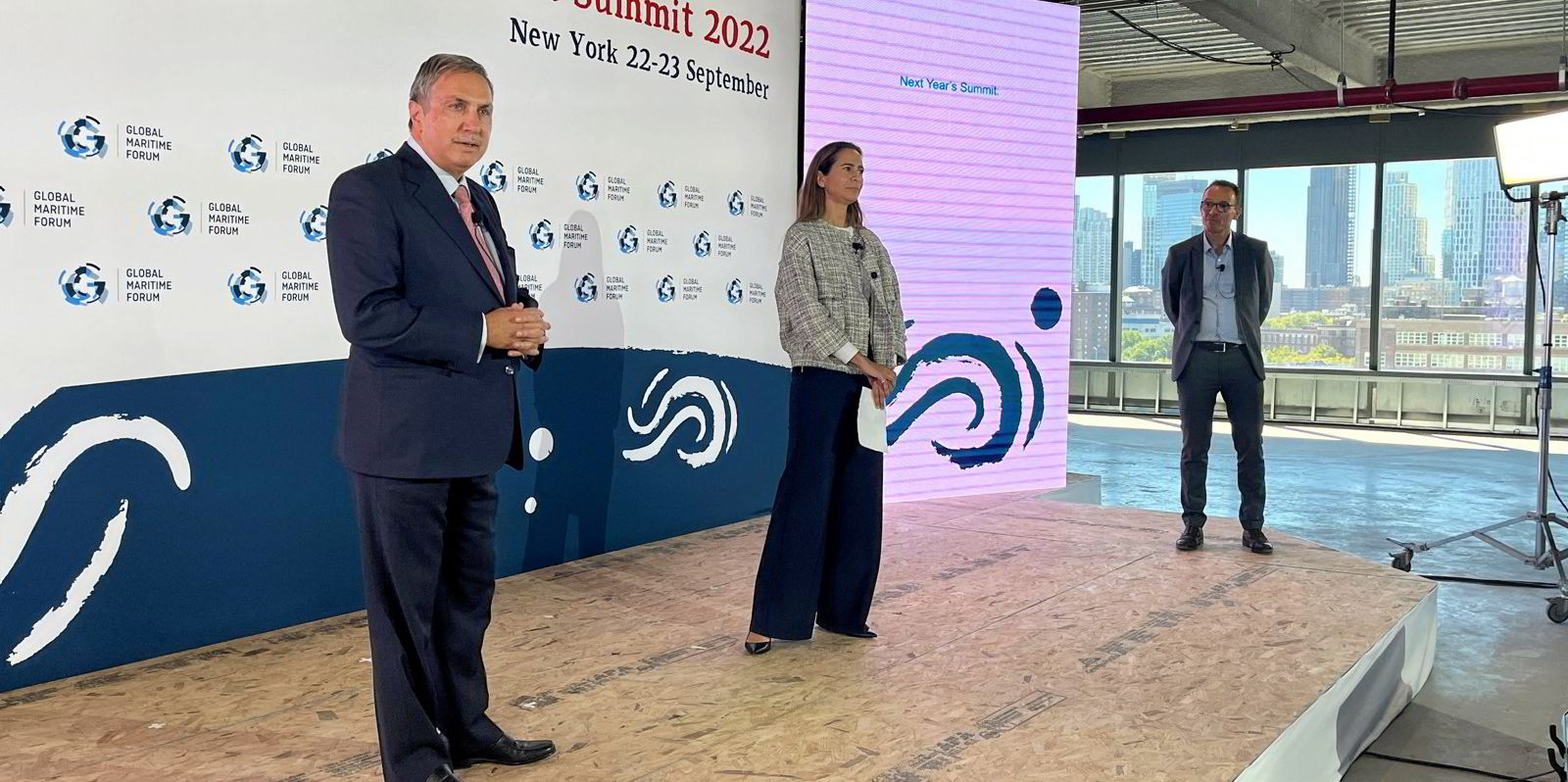The top shipping executive at chartering giant Cargill has highlighted problems in the International Maritime Organization’s upcoming rules on ships’ carbon intensity just three months before the new regulation enters into force.
The comments by Jan Dieleman, president of bulker and tanker operating division Cargill Ocean Transportation, come amid reports that charterers are pushing back in efforts to introduce clauses in shipping contracts aimed at maintaining compliance with the Carbon Intensity Indicator (CII).
The regulation’s rating system for vessels will be heavily influenced by how charterers operate the ship under a time-charter contract when it enters force at the start of next year.
“The way it’s been framed today, it doesn’t make sense,” Dieleman told TradeWinds on the sidelines of the Global Maritime Forum’s annual summit.
The shipping executive, who is chairman of the nonprofit forum that aims to tackle shipping’s challenges, said he agrees with the goals of the CII regime.
But he said how the regulation factors port stays into the calculation of a ship’s rating is a problem.
“The reality is, the owner doesn’t control port stay. But the other reality is, a lot of times the charterer doesn’t control port stay, either,” Dieleman said.
“At the end of the day, the only discussion now is, who’s going to take a risk that you can’t manage, which I think is a wrong starting point of a discussion.”
Charterers have not been alone in flagging problems with the way the CII regulation factors in port stays.
Malaysia, Panama and three leading shipping groups had urged the IMO to ensure ships are not penalised in the regulation’s rating system for port congestion and weather problems.

But as TradeWinds’ Green Seas newsletter reported in May, IMO delegates declined to make the changes, although they left open the possibility of future adjustments before the CII’s soft enforcement ends in 2025.
In the meantime, crafting contract language that would restrain the freedoms traditionally afforded to charterers in shipping contracts to ensure acceptable ratings are maintained has proved difficult. Shipping organisation Bimco, for example, had been aiming to roll out a CII clause for charter contracts but is now not aiming to do so until November, as TradeWinds has reported.
Clear willingness
Dieleman said he does not see the pushback from charterers as an unwillingness to collaborate. And as a charterer, he said he is willing to do his part, but he wants to see if CII can be changed so things outside of the control of both shipowners and charterers do not hit vessel ratings.
He pointed to the example of a Cargill-chartered ship that was stuck in China for 11 months during the height of the Covid-19 pandemic. It would have received a poor CII rating under the upcoming rules.
“It’s not the owner’s fault. It’s not the ship’s fault. It’s not the charterer’s fault. So how are we going to deal with this?” he said.
TradeWinds also reported that few charterers are signing up for a Bimco clause that factors in shipping’s inclusion in the European Union’s Emissions Trading System (ETS), which is proposed to enter force in 2023 or 2024, depending on which proposal is ultimately adopted.
As with CII, Dieleman said the ETS legislation is a good initiative.
“The way it’s been written for our type of business is difficult,” he said.
In this case, the issue for charterers is how ballast legs are factored into ETS. Under a typical spot charter contract, a voyage starts with a ballast leg and ends with discharge, but Dieleman said the problem arises when 50% of the subsequent ballast leg is factored into the emissions calculation.
“That creates some confusion,” he said.

How ETS carbon allowances are settled also adds complexity, the executive added.
“It is all kinds of complexity that a lot of people, I don’t think, really understand,” Dieleman said of the ETS proposal. “I think that will take time, and I think we will get there.”
One effect shipping’s inclusion in ETS will have is to make it more expensive for inefficient ships to serve Europe. “That basically means that the more efficient ships will probably gravitate towards European trade,” he said.





